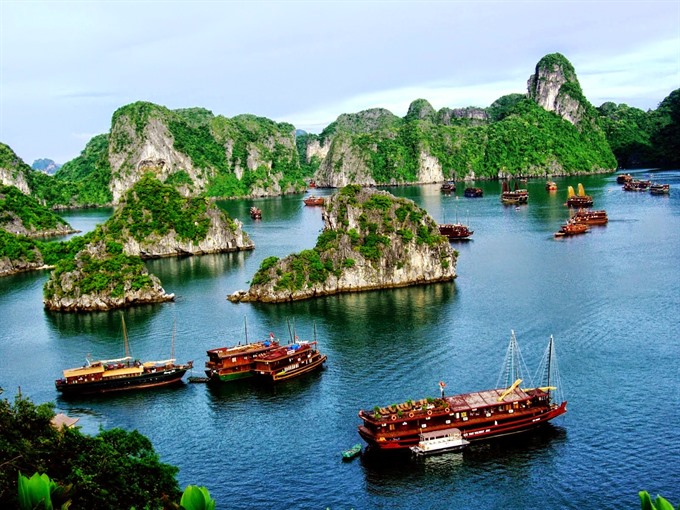 Life & Style
Life & Style

Preservation of cultural and natural heritage sites plays an important role in tourism growth in Việt Nam, experts said at a conference yesterday in HCM City.
 |
| The UNESCO-recognised World Heritage site Hạ Long Bay welcomed 6.9 million visitors last year, earning nearly VNĐ10.8 trillion (US$463 million) in revenue. — Photo from chudu24h.com |
HCM CITY — Preservation of cultural and natural heritage sites plays an important role in tourism growth in Việt Nam, experts said at a conference yesterday in HCM City.
Võ Văn Thành of the Southern Institute of Social Sciences (SISS), said tthanks to tourism, protection, conservation and restoration of world heritage sites were improved.
"In Việt Nam, heritage tourism activities have contributed to introducing the country’s World Heritage sites,” he said.
The conference, which discussed the opportunities and challenges for cultural heritage values, was organised by the HCM City University of Culture in collaboration with SISS, the HCM City Institute for Development Issues, and the International Centre for the Study of the Preservation and Restoration of Cultural Property (ICCROM).
More than 300 cultural experts and researchers from Việt Nam and abroad took part in the event.
Preservation of heritage sites has helped create jobs and improved living standards in local communities, Thành said.
Last year, heritage sites brought a high level of visitors and revenue from ticket sales and tourism services, according to the Ministry of Culture, Sports and Tourism’s Cultural Heritage Department.
Hạ Long Bay in Quảng Ninh Province, for example, welcomed 6.93 million visitors last year, including 2.9 million foreigners, a year-on-year increase of 12.9 million.
Its tourism revenue reached nearly VNĐ10.8 trillion (US$463 million), a rise of 39 per cent compared to 2016.
The Huế Citadel welcomed 3 million visitors, including 1.8 million foreigners, earning VNĐ320 billion ($13.7 million) from entrance ticket sales, a four-time increase compared to 2011.
Nguyễn Thị Thu Trang of the cultural heritage department said: “Tourism is considered a motivating factor to protect cultural and natural heritage sites. It is one of the most effective means for cultural exchange between Việt Nam and the world.”
Việt Nam has eight UNESCO-recognised World Heritage sites and eight UNESCO-recognised world biosphere reserves.
The World Heritage sites are the Huế Citadel, Hạ Long Bay, Hội An Ancient Town, Mỹ Sơn Sanctuary, Phong Nha – Kẻ Bàng National Park, Thăng Long Royal Citadel complex, and Hồ Dynasty Citadel.
The biosphere reserves are the Cần Giờ Mangrove Forest in HCM City, Nam Cát Tiên National Park in Đồng Nai and Lâm Đồng provinces, Cát Bà Archipelago in Hạ Long City, Hồng (Red) River Delta, Kiên Giang biosphere reserve in the Mekong Delta, Cù Lao Chàm in Hội An, Western Nghệ An, and Cà Mau Cape in the southernmost province of Cà Mau. — VNS




